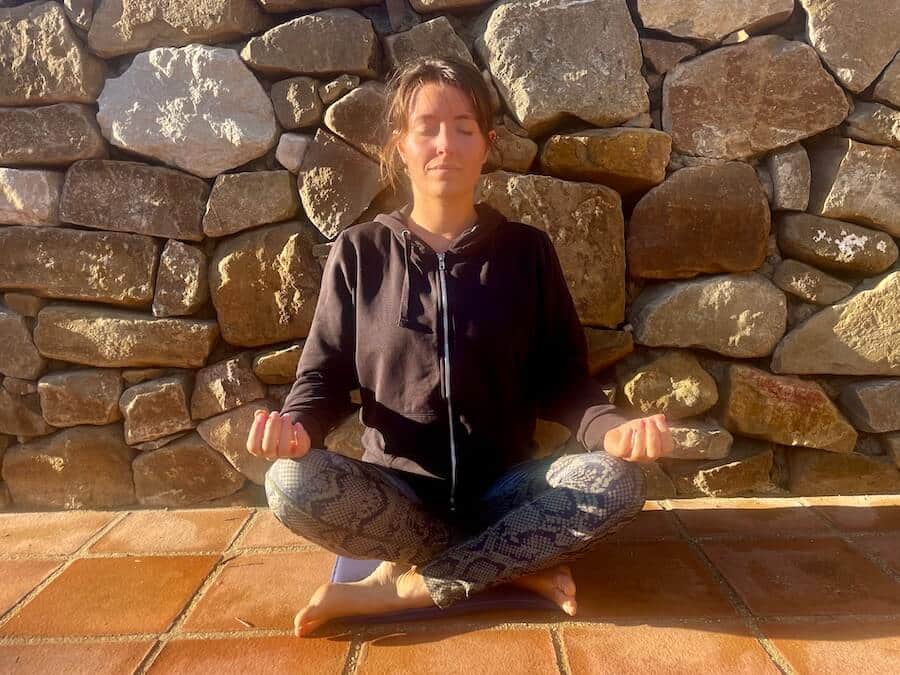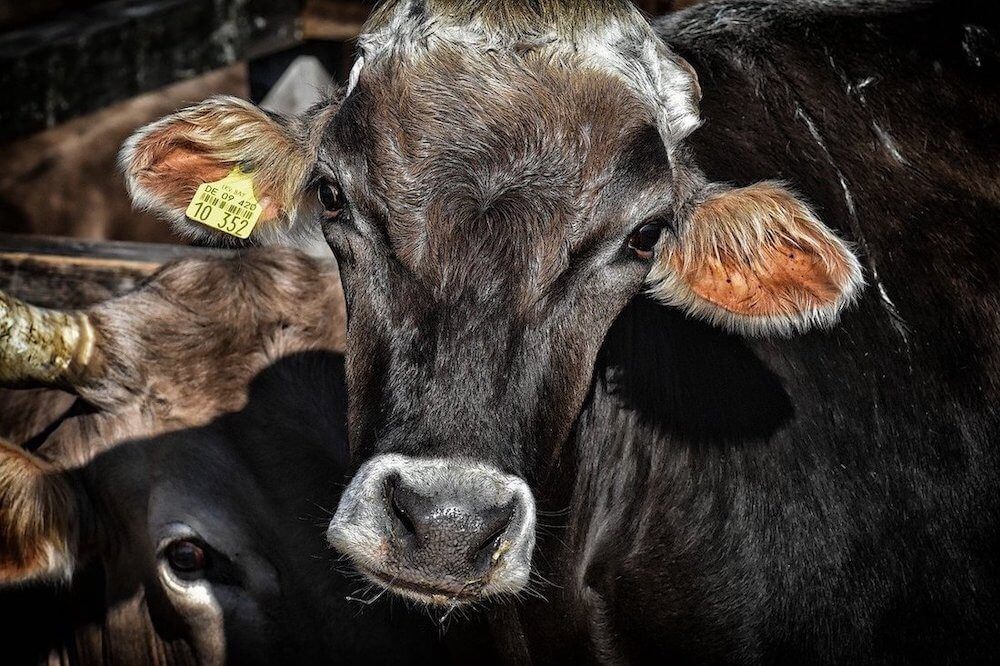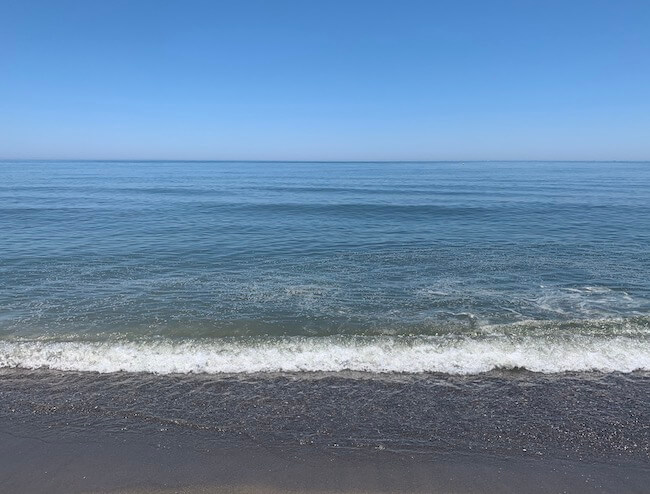Can you learn mindfulness skills on your own?
You know that feeling when you think you can do something, but then you doubt yourself? You doubt whether you need someone to tell you how to progress and guide you on your way.
And it’s true.
We learn faster when we learn with and from other people who have done something.
Or do we?
Because let’s face it, that’s how most of us have been brought up to think. And learning from others is an essential part of our overall growth.
But that doesn’t mean there aren’t some things you can learn on your own too.
And mindfulness is one of those things.
Just as you can transcend limitations even if you think you can’t meditate, so can you get skilled in mindfulness.
It may take longer on your own and you might need to do a fair bit of reading and/or listening to Youtube videos. But you can do it!
Get down to it, baby.
When someone meditates, the only person who knows what it’s like in their mind, is that person.
So don’t feel judged for not meditating well enough or wonder whether you can meditate wrong, because the practice belongs solely to you.
BUT having said all that, if we don’t read about it, or meet other people who meditate, or take a class, or find stimulation for learning somewhere, then maybe you won’t get as much out of your practice as you could.
As long as you absorb and learn about the extraordinary possibilities that become possible with meditation, the way you travel the journey is less important, in my opinion.
Because not everyone can go off to an amazing Buddhist retreat to practise meditation for example. We all have our own path to walk.
In fact, I confess, I’ve done a hell of a lot of learning on my own. It never stopped me when I couldn’t afford classes, couldn’t find classes or didn’t have time for classes, I still study the thing and practise the thing, whatever it may be.
With the incredible resources available to us online, we can learn almost anything – okay so that might be using a bit of artistic licence, but you get the picture!
So don’t listen to your voice of doubt.
Just get started, now.
Table of Contents
If You Only Have 5 Minutes Start Here: Can You Learn Mindfulness Skills on Your Own?
You can learn mindfulness on your own at home. If you don’t have time to read the whole article, here’s a summary of how to get started with your mindfulness practice and some tips to help boost your progress.
- Read as much as you can on mindfulness. Read a little often rather than a large quantity in a one-off session.
- Watch videos on Youtube about mindfulness.
- Set a time of day which is most convenient for you and try to meditate at that same time every day. If you can manage twice a day, all the better.
- Start off with a short meditation of just a few minutes and gradually build it up.
- Sit comfortably in a supported position with your spine upright.
- Begin to breathe and become aware of your breath.
- Count your breath silently, each count for the in and out breath together. If you notice a thought occur, bring your focus back to the breathing.
- If you like, you can start back at number one every time you notice a thought, though this can be counter-intuitive for some people as it seems frustrating, almost like a punishment (which is the opposite of what you want).
- See yourself as the thought-catcher with a net, or the Venus fly-trap, anticipating the next fly. If you wait expectantly for each thought in this way, it can help to slow down the flow of thoughts.
- Notice how it feels to be here right now, with no demands on your time.
- You may choose to set a timer for your meditation so that you know exactly how long you’re practicing for.
- Be gentle and forgiving on yourself.
- Don’t worry about the thoughts running through your head. Just be aware of them.
- Be patient. Thank yourself for the private time in meditation and give yourself a reward mentally.
- Above all, enjoy your down time. This is regenerative and health boosting. Never feel like doing nothing is doing nothing. In doing nothing you’re doing A LOT for you mind, body and soul!
Mindfulness: Being Fully Awake
This short video by Palouse mindfulness explains how mindfulness can impact us by awakening us to the present moment.
Is it Difficult to Learn Mindfulness Skills?
It’s difficult to become mindful in every moment of our lives. Something happens and your brain immediately switches into reactionary mode.
There’s nothing wrong with that (it’s survival mode) as long as we are aware that it’s happening. And that’s an obtainable goal.
We react when something’s said to us, done to us, given to us, taken from us, etc., as though we aren’t really making our own choice of how to behave. We give our power away.
Like being offended when someone insults you for example. How can you learn to let it go?
If someone says something shockingly rude to you, chances are you’ll react.
This is our standard way of traversing through our lives, and it’s pretty hard to replace that with our own choice and mindful behaviour.
Or what about when we become reactive to a situation and decide to quit, on an impulse. We can unlearn these behaviour patterns once we’ve recognised them. Learn how not to quit so easily and change our reactions to outer triggers.
But we can begin to be more mindful. And every step forwards is rewarded in some way or another.
By becoming more aware of the way we respond to situations in our lives we can choose to work on altering the responses which don’t serve us.
There are also different levels of mindfulness so aim to go one step up from wherever you are now.
That’s always going to be achievable.
No matter what your situation, you can always take one step and start to learn mindfulness at home.
How to Get Started with Mindfulness
In the first place, read up on mindfulness, so you whet your appetite for practising and progressing.
If you’re a goal orientated person, you may like to set yourself some mini goals to work towards. Some examples of these goals are:
- Pay attention every time you eat so that you become more mindful while you eat.
- Listen extra carefully when engaged in conversation with friends and colleagues
- Set aside a specific time each day to practise mindfulness meditation (or you may choose to do this twice a day, morning and evening).
- Choose not to be on your mobile at the same time as doing something else, or generally try not to multitask at all.
- Remove or turn off your devices before going to bed so that you can be mindful as you fall asleep.
Other examples of mindfulness are in everything throughout the day, from showering to working.
How to Become Mindful in Your Every Day Life
Becoming mindful in your every day life means taking time to really pay attention, but not by forcing yourself to do it.
In fact, forcing yourself is pretty much impossible and can only end badly.
Instead, by practising consistently, you’ll slowly gain the strength and focus to become more mindful in your every day life.
One way to help mindfulness is to take up yoga and pay special attention to your breathing during your yoga practise. This in itself takes time, but I’ve found it’s changed my ability to be aware in so many other situations.
Another thing you can do is practise meditating while you’re travelling. You have time to kill, what better opportunity to practise becoming more mindful?
Then there’s those moments in the day when you’re involved in a physical activity.
While out hiking, I’m no longer randomly breathing – I’m aware of my breath (sometimes). The same goes for meditation – it’s easier since becoming more masterful of my breath in yoga.
To just set out and say ‘I’m going to be mindful in my daily life‘ isn’t realistic. We’re creatures that are bound by habit and we sail through our days largely on auto pilot.
So if you really want to become mindful in your every day life, I’d suggest you take up meditation and apply the breathing technique to other parts of your day until you gradually become more mindful.
Does your mind chatter during meditation? Of course it does, and in the beginning it might even seem like overload.
But see that as an opportunity to mindfully observe your thoughts.
It takes years (or a lifetime) to become truly mindful, but when you lose the mindful quality and then become aware that you lost it, that’s also progress. You’re becoming aware of your auto pilot mode.
Or maybe someone makes you mad and you retort back at them quickly, a knee jerk reaction without actually thinking first. If you then realise what just happened, then you know that you’re becoming more mindful.
How do I Start Being Mindful?
Start by practising mindfulness meditation once or twice a day. You may choose to meditate with or without music and with your eyes open or closed during meditation. The important thing is to start.
Gradually begin to introduce that quality of mindfulness into specific moments of your normal day. For example you might choose to be mindful at your morning coffee break every day. The specific moments you choose are up to you, but choose moments which will be easier to be mindful, and let that practice introduce you to mindfulness in your normal routine.
Add a daily yoga practise to your schedule to turbo boost your ability to be mindful of your breath. (Be careful – not many yoga videos actually prioritise the breathing side of yoga, so it’s up to you to either find a teacher who does, or to just apply it yourself, regardless of the class you’re following.)
Be attached to and focussed on your breath throughout the yoga flow. It isn’t as easy as it sounds and takes a lot of practise to stay present with it.
Learn Mindfulness Skills Meditation at Home
I believe that we can learn anything we put our minds to. Whether we learn at home or in a class is a matter of personal choice and circumstance. I know a lot of people who think they can’t do something because they don’t have the time/money/confidence to go to a class or retreat.
And while there are some aspects which you’ll only get from mixing with other like minded people, everything else can actually be learned at home. The human contact element is the difference.
As I already said, I’ve always been a bit of a loner in that respect and I’ve learned so many things on my own, at home.
It’s not for everybody of course, but if it resonates, go for it!
So don’t let it stop you from enjoying mindfulness meditation if you’re new to this. Just start slowly and step by step enrich your subconscious mind with more information about this practice.
Alongside that, begin to do a short meditation and if at first it doesn’t resonate, just play with it until you find the magic moment when you’re connecting with your own private practice.
Mindfulness meditation’s about being aware of your thoughts, so in essence you can literally start anywhere and tune in to what thoughts are passing through your mind.
But in a busy day, that may not be so easy to sustain . . .
Basic Introduction to Starting a Mindfulness Meditation
A typical meditation setting when you imagine somebody mediating would be a dark silent room with no distractions.
But don’t let it put you off if you have to meditate with noise around you. This is one of the biggest hurdles for many people and it can be challenging if you’re just starting out.
If this is you, then you can choose between practising mindfulness around the noises and noticing the noise as it happens, or by wearing headphones to try to shut out the environmental noises. I recommend trying both methods.
Some days, wear the headphones for a more silent experience and on other days meditate without, to help strengthen your ability and to remind you that you really can meditate anywhere.
Start your meditation by taking in your surroundings. Notice every little thing as you breath deeply and calmly. You may choose to meditate with your eyes open or closed, whichever resonates more with you. I prefer to keep my eyes closed in most of my mediations.
Next, begin to do a body scan, passing your focus over your body, from the toes upwards until you reach your jaw and your face and your head. It’s at this point that you can start to count your breath or think ‘in’ ‘out’ with every breath.
Watch your mind for other thoughts, just observing without judgement and without communicating with the thoughts.
Stop Your Thoughts in 1 Second
In this short video Ashwani Thakur shares a handy tip about how to stop the flow of thoughts by saying to yourself, what will my next thought be?
Final thoughts on Can You Learn Mindfulness Skills on Your Own?
I hope this article has encouraged you to start learning mindfulness on your own. Take is step by step, be patient, be brave and most of all, be persistent.
Mindfulness doesn’t come overnight but we owe it to ourselves to take that wee step each day of becoming aware of ourselves, of our actions and of our underlying driving beliefs.








